
1/20 Hello, my name is Kerstin and I am a PhD candidate in early modern literature and animal studies. With the help of John Stow’s 1598 A Survey of London, my paper will take you to back to early modern London and reveal the City’s equine landscape. #HiddenLandscapes 
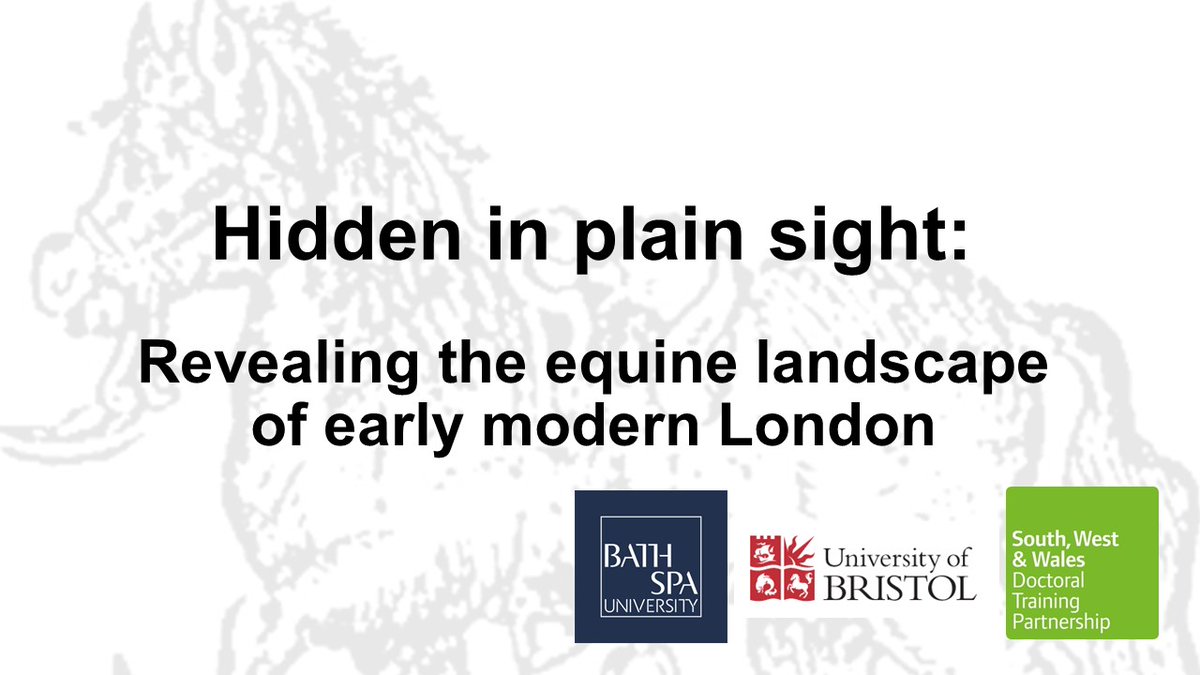
2/20 John Stow lived in London all his life from 1525 to 1605. He was a passionate antiquarian who dedicated himself to charting the City’s rich history. He often visited archives for his research but also explored London extensively on foot. #HiddenLandscapes 
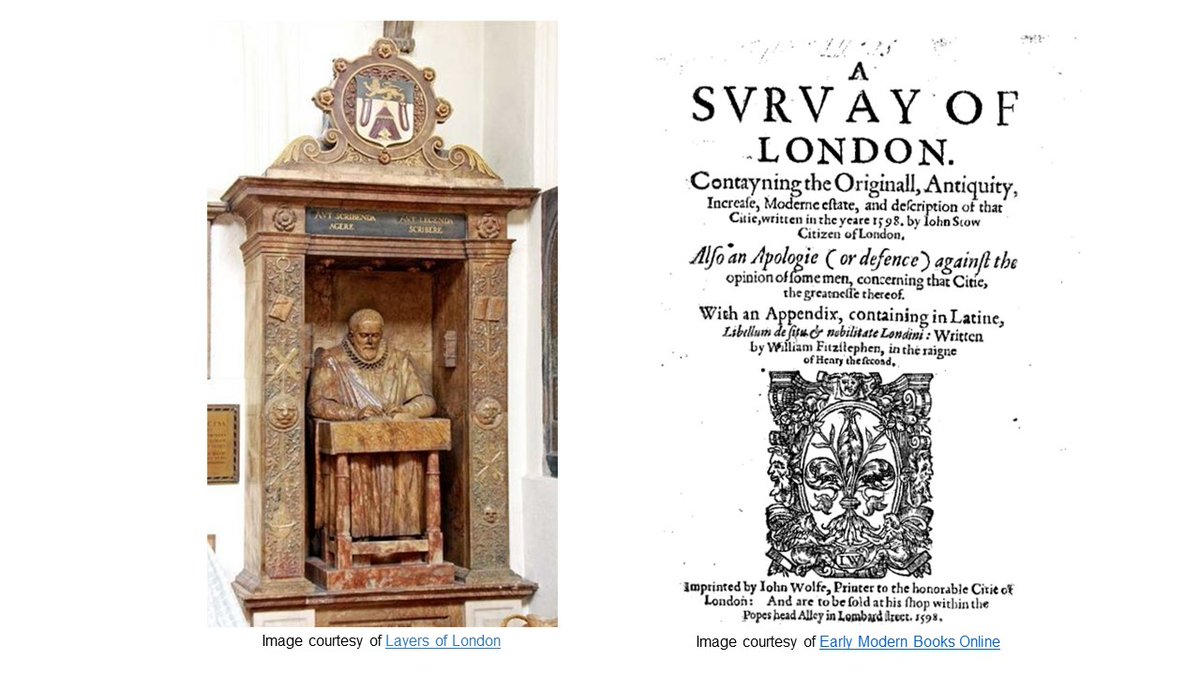
3/20 Because Stow published the Survey in his later life (aged 73), his passion for London’s history has sometimes been considered as nostalgia for an idealised past and that consequently we cannot learn all that much from his Survey about early modern London. #HiddenLandscapes
4/20 However, I suggest that when we bring the Survey to bear on the Agas map, we discover that Stow engaged with his City through the lens that mattered to his fellow citizens the most: their daily lives in which horses were an ever-tangible presence. #HiddenLandscapes
5/ 20 The 1633 version of the 1561 Agas map offers a bird’s-eye view of the City. In the Survey, we can find most references to horses in Smithfield, Puddlewharf, Cheapside, Cornhill and the Tower of London. Today, I focus on Cheapside and Smithfield. #HiddenLandscapes 
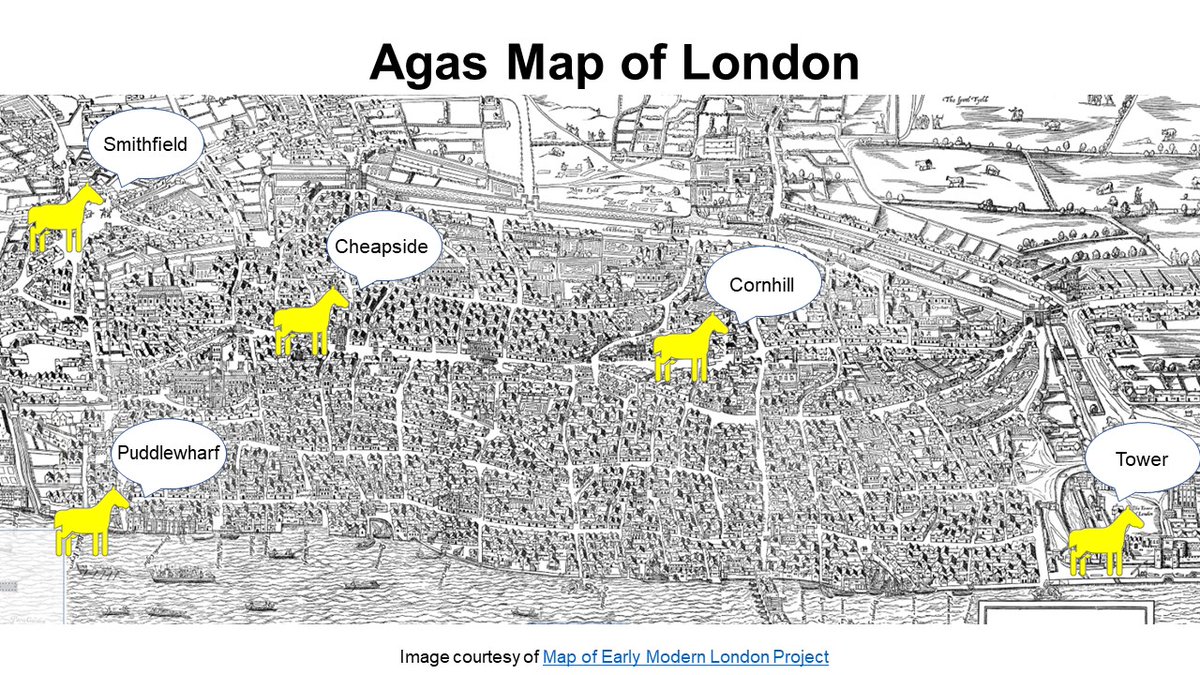
6/ 20 Gervase Markham, an early modern compiler of horsemanship manuals, considered the horse as essential to all aspects of life. The Survey echoes this high esteem for horses and pays close attention to equine practices taking place in the City. #HiddenLandscapes 
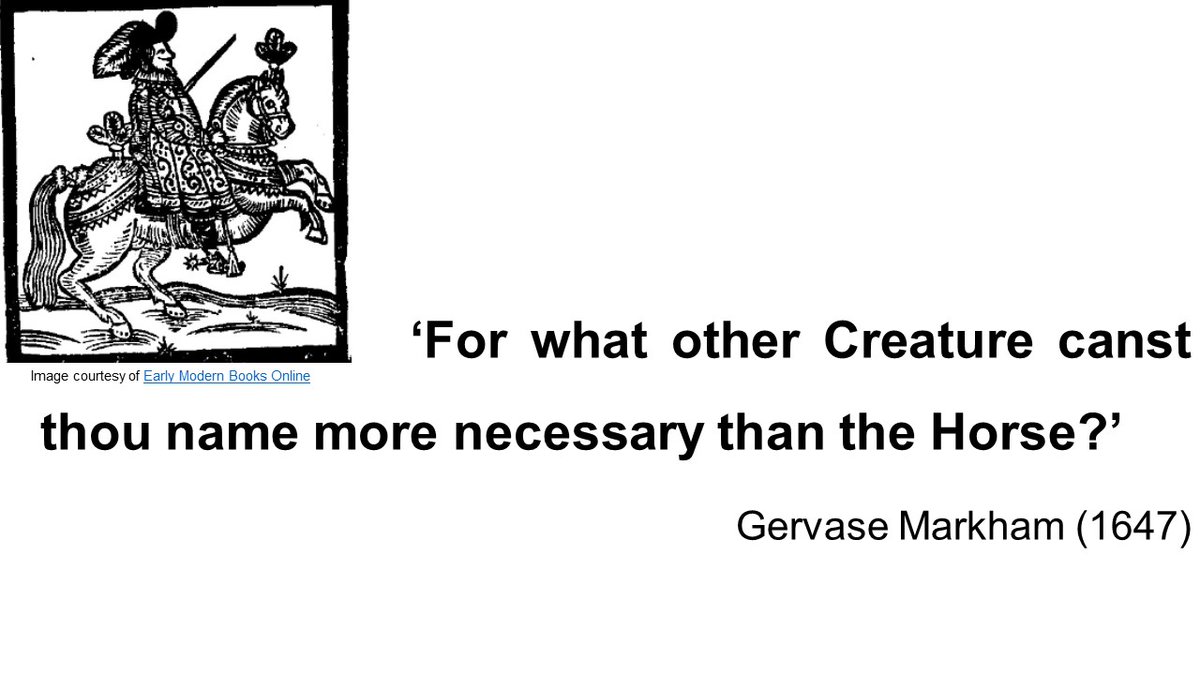
7/ 20 So we learn that Cheapside was an open space where horses participated in public spectacles like tournaments in the 14th century. However, in Stow’s lifetime traffic increased so much that the iconic Cheap cross obstructed horse-drawn carriages. #HiddenLandscapes ![Citations from the Survey: ‘[I]n the yeare 1331 […] in a](/images/1px.png)
![Citations from the Survey: ‘[I]n the yeare 1331 […] in a](https://pbs.twimg.com/media/Ej4E6MDWAAAUsPl.jpg)
8/ 20 Consequently, the Survey powerfully conveys how urbanisation affected public space. Whereas it was possible to put on equine entertainment in medieval Cheapside, keeping early modern Cheapside clear for horse-powered traffic became a more pressing concern. #HiddenLandscapes
9/ 20 Moreover, the Survey refers to equine practices to show how London’s rapidly expanding population put pressure not only on the medieval road system but also on urban water sources such as Smithfield pond. #HiddenLandscapes ![Citations from Survey: ‘Smithfield pond […] of old time](/images/1px.png)
![Citations from Survey: ‘Smithfield pond […] of old time](https://pbs.twimg.com/media/Ej4FP73XcAA-6iH.jpg)
10/ 20 Overuse damaged this water source so much that equine custom eroded and the site changed name from Horse pool to Smithfield pond. Yet, because Stow engages with urban change, the pond’s equine heritage remains alive in the consciousness of the reader. #HiddenLandscapes
11/ 20 In the cases of Cheapside and Smithfield, the Survey displays an acute awareness of how equine encounters changed over time in specific locations. We also find that Stow makes important general observations about equine practices in early modern London. #HiddenLandscapes 
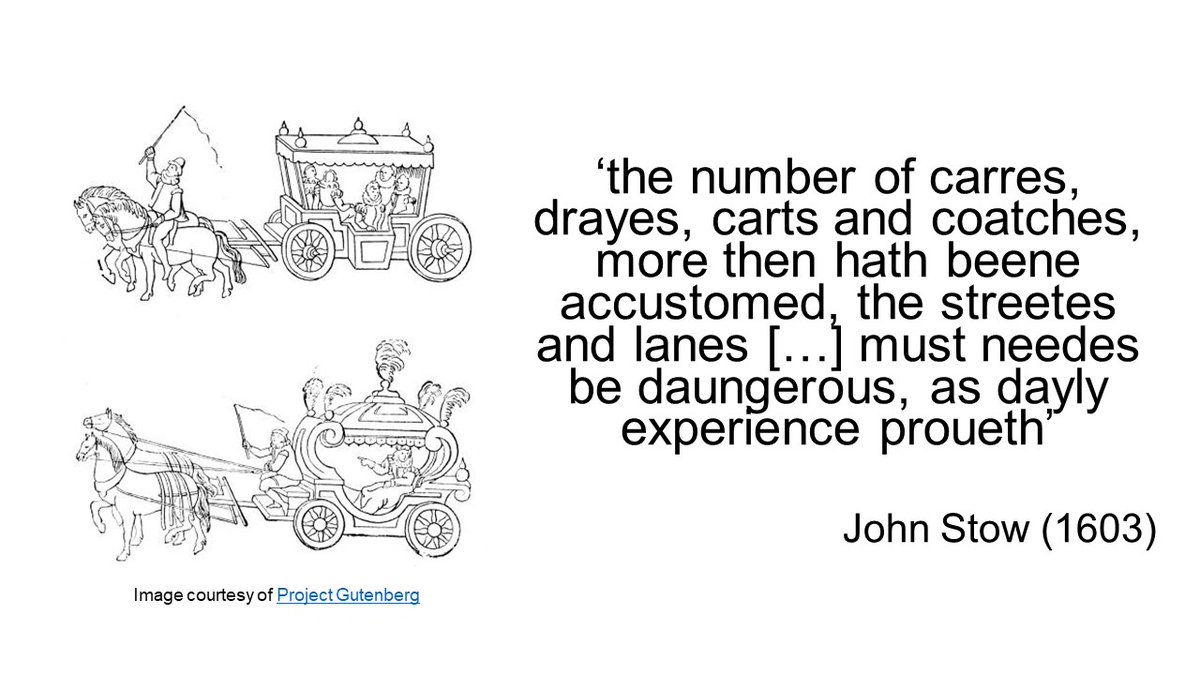
12/ 20 The Survey points the finger to coach- and draymen and accuses these equine occupations as culprits for London’s roads becoming so dangerous. #HiddenLandscapes 
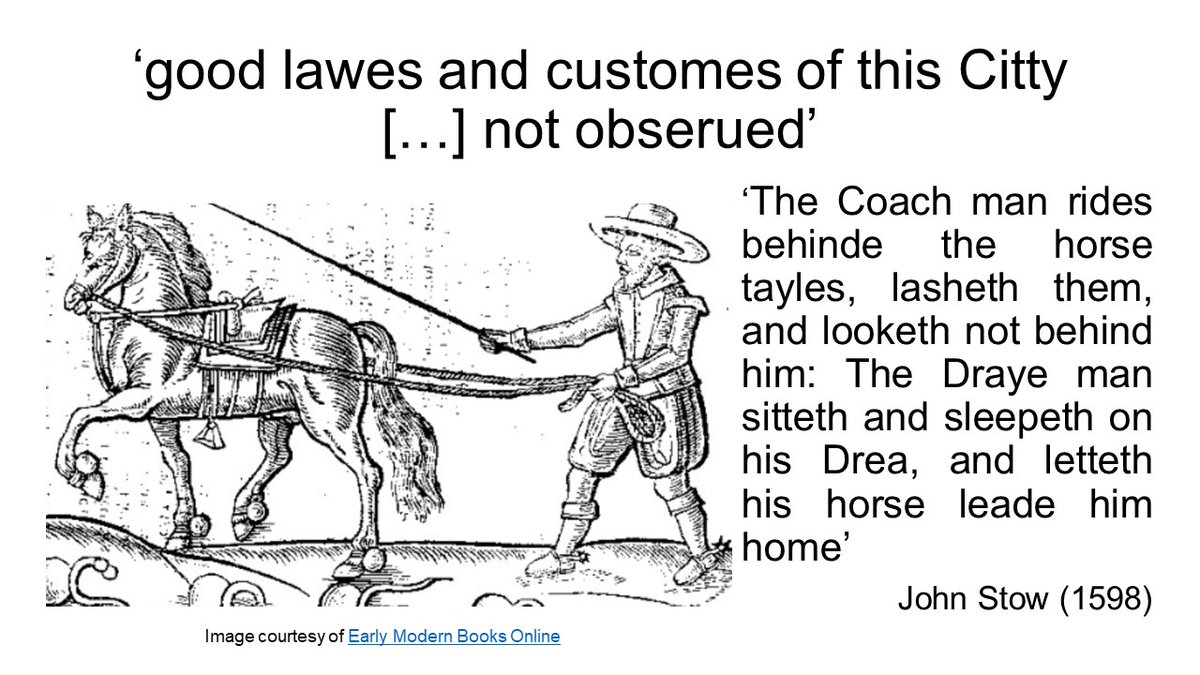
13/ 20 The Survey implies that equine trades no longer engage with their animals as they should. In the past, the coachman did more than lash his horses. The drayman stayed awake and guided his horse home. #HiddenLandscapes
14/ 20 This raises the question of why the Survey portrays equine laws and customs to matter less to early modern Londoners and that is where the Reformation comes into play. #HiddenLandscapes
15/ 20 In the Survey, the coach is a sign that individualistic pursuit of wealth and status increasingly dominates Protestant society. In the past, only the elite rode in coaches. Now everyone wants to and often does at the expense of fellow citizens. #HiddenLandscapes 
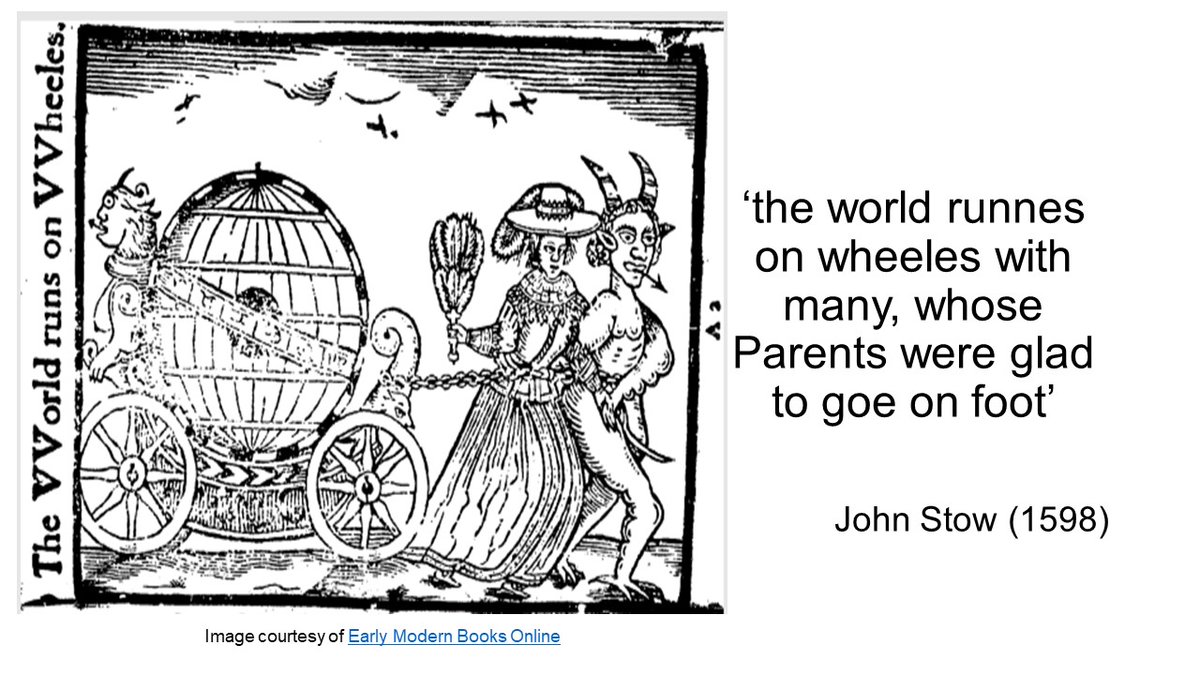
16/ 20 According to the Survey, earlier generations were content with their lot in life and contributed to the communal good. However, Protestant Londoners only seek their own material and societal success which their fascination with the coach proves. #HiddenLandscapes
17/ 20 The coachman rushing his horses with the whip and the drayman falling asleep, with neither of them paying attention to their horses or fellow road users, therefore exemplifies Stow’s unease at the prioritising of the individual over the community. #HiddenLandscapes
18/ 20 The coach and drayman’s conduct is a far cry from London’s Catholic past which saw equine spectacles like the Cheapside tournament. As we have seen, the Survey stresses the custodial care for horses in 1331 as sand was put down so they did not slip. #HiddenLandscapes
19/ 20 To end, once unhidden the Survey’s horses reveal themselves to purposefully navigate us through London’s rapidly altering landscape and show how equine encounters helped the early modern reader to make sense of urbanisation and the Reformation. #HiddenLandscapes
20/ 20 Thank you! #HiddenLandscapes
• • •
Missing some Tweet in this thread? You can try to
force a refresh


